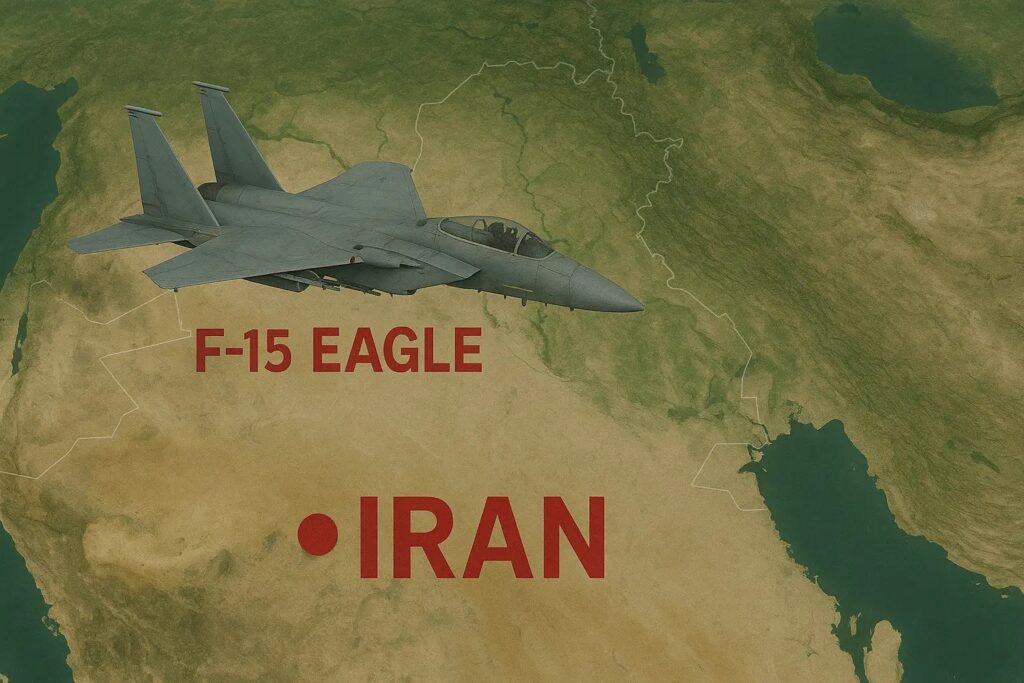US Military Bases Used in Iran Attack
The Strike That Shook the Region
In the early hours of June 22, 2025, the United States launched a coordinated and precision airstrike against Iran’s nuclear facilities. Targeting key sites in Fordow, Natanz, and Isfahan, this strike marked a critical escalation in the growing Iran–Israel–US conflict. But behind every bomb dropped and missile launched, there was a vast network of military bases in play — silent, strategic, and globally positioned.
This article unpacks the full list of military installations likely used in the operation, highlighting how the U.S. military infrastructure enabled such a deep, high-tech strike.
1. Al Udeid Air Base, Qatar: The Command Center
Role: Command, Surveillance, Bomber Launch
Al Udeid is the crown jewel of American presence in the Gulf. Hosting over 10,000 personnel, B-52s, drones, and surveillance aircraft, this base likely served as a command and control hub.
- Likely takeoff point for B-2 Spirit bombers.
- Coordinated AWACS and JSTARS intelligence missions over Iranian airspace.
- Provided real-time targeting data for bunker-busting strikes.
2. Al Dhafra Air Base, UAE: Stealth Operations
Role: Fighter Jet Deployment, Reconnaissance
Situated just 300 miles from Iran, Al Dhafra is home to F-22 Raptors and F-35 Lightning IIs. These jets, known for their stealth, may have entered Iranian airspace undetected.
- Hosted aerial refueling tankers like the KC-135.
- Likely used for launching EA-18G Growlers for electronic warfare.
- Monitored airspace suppression before bombers entered.
3. USS Dwight D. Eisenhower (Carrier Strike Group)
Role: Tomahawk Cruise Missile Launch
Operating in the Arabian Sea, this Nimitz-class aircraft carrier likely played a cruise missile support role.
- Tomahawk missiles fired from destroyers and submarines.
- F/A-18 Super Hornets potentially launched SEAD (Suppression of Enemy Air Defense) missions.
- Floating airfield for rapid response aircraft.
4. Naval Support Activity Bahrain: Maritime Coordination
Role: Navy HQ for 5th Fleet
Located in Manama, Bahrain, this is the nerve center for U.S. naval operations in the region. It likely coordinated submarine launches and maintained cyber-secure communication between forces.
5. Prince Sultan Air Base, Saudi Arabia
Role: Surveillance, Drone, Cyber Intelligence
While Saudi Arabia is treading carefully, the PSAB base has been used in the past for surveillance missions over Iran.
- Hosted MQ-9 Reaper drones.
- Provided signal intelligence (SIGINT) and thermal mapping.
- May have operated under silent cooperation.
6. Diego Garcia – British Indian Ocean Territory
Role: B-2 and B-52 Bomber Launchpad
This remote atoll is a strategic gem for long-range U.S. bombers.
- Secure location for stealth bombers to refuel and reload.
- No-fly zone surrounding the area allows discreet movements.
- Often used in Gulf War and Iraq invasion — likely active now.
7. Israeli Air Bases: Nevatim & Ramon
Role: Joint Intelligence, Tactical Strikes
Though the attack was officially American, Israeli jets and surveillance drones likely fed critical intel.
- Nevatim Air Base: Possible launch site for F-35I Adir jets.
- Ramon Air Base: Near Negev desert, used for UAV and kamikaze drone launches.
8. Space and Cyber Command Involvement
Role: Blindfolding Iranian Radar
U.S. Space Force and Cyber Command played a silent but devastating role:
- Jamming Iran’s radar and S-300 missile systems.
- Using low-orbit satellites to give real-time positioning.
- Possibly hacked into Bavar-373 systems (Iran’s own S-300 clone).
Target Summary: How These Bases Enabled the Strikes
📍 Target 🎯 Strike Type 💥 Base Likely Used
Fordow Nuclear Site. Bunker-Buster Bombs. Al Udeid, Diego Garcia
Natanz Facility. Stealth Airstrike. Al Dhafra, Nevatim
Isfahan Nuclear Plant. Cruise Missiles USS Eisenhower, Bahrain
The Geopolitical Impact of These Bases
Using these bases allowed the U.S. to:
- Attack without full-scale deployment on Iranian borders.
- Maintain plausible deniability for local Gulf allies like UAE, Saudi Arabia, and Qatar.
- Create 360° strategic pressure on Iran from land, sea, and air.
This operation showed how powerful American global infrastructure really is — they don’t need to invade. They simply strike from the shadows of pre-positioned power.
Will Iran Strike Back at These Bases?
Iran has already issued statements targeting U.S. bases in Qatar, UAE, and Bahrain if another attack follows. Hezbollah, Kata’ib Hezbollah, and other proxies might use drones or rockets against soft targets.
Conclusion: The Future of Warfare Is Pre-Positioned
This was not just a military operation — it was a demonstration of American geostrategic muscle. The U.S. can now strike anywhere, anytime, using a global chessboard of bases.
And Iran? It must now respond without escalating into full-blown war.

